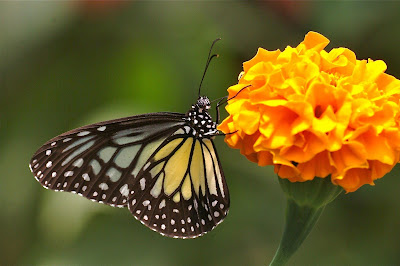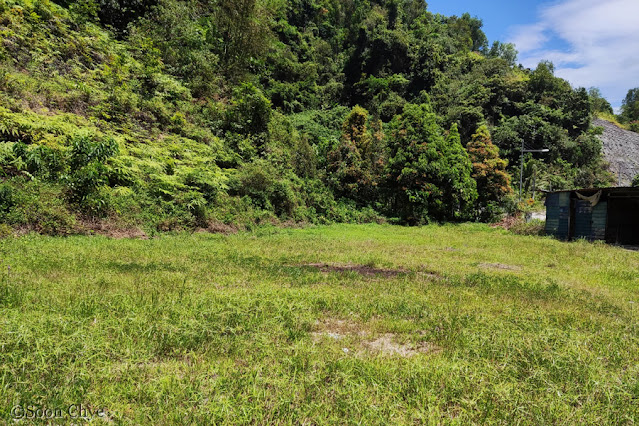Life History of the Yellow Glassy Tiger (Parantica aspasia aspasia)
Butterfly description:
The wings primarily exhibit a brownish-grey hue with the typical bluish spots/markings characteristic of the Parantica species. Notably, each wing features a vibrant yellow basal patch, encompassing approximately half of the hindwing surface.
Field Observations:
This butterfly is commonly found in Peninsular Malaysia, preferring forested areas over open country. It moves leisurely, often gliding in mid-air, and when at rest, it tends to hang upside down on dried branches with its wings folded shut.
Distributions:
According to iNaturalist observations, this species is distributed across Southeast Asia, including Thailand, Cambodia, both East and West Malaysia, Singapore, Indonesia (Sumatra, Borneo, Java, Sulawesi), and the Philippines.
Host plant: Raphistemma sp. A climber species that exudes white sap when its leaves are torn.
Early stage:
Egg: 5 days
Larva: 13 days
Pupa: 7 days
The Yellow Glassy Tiger deposits its eggs individually on the underside of host plant leaves. These eggs exhibit transverse ribbing on the surface and are embellished with subtle vertical ridges.
 |
| 2 views of the egg of Yellow Glassy Tiger |
After approximately 5 days, the egg undergoes hatching, and the newly emerged caterpillar consumes the entire eggshell. The caterpillar features a whitish cylindrical body with numerous short setae. Its large head capsule is black, and on the dorsum of the 2nd thoracic and 8th abdominal segments, there are short, pale brown protuberances. Additionally, small black dash-shaped patches are present on the prothorax dorsum, and all eight pairs of legs exhibit a black color, with a sizable black patch at the posterior end.
As the freshly hatched caterpillar begins feeding on the leaves, its body undergoes a transformation, adopting a brownish-red hue with the emergence of numerous white oval-shaped spots. The two pairs of protuberances turn brownish-red, elongating and projecting outward. The growth is notably swift, with the body length doubling in approximately 1-1.5 days. After 2 days from hatching, the caterpillar undergoes its first molt, transitioning to the second instar.
 |
| Top: Freshly hatched caterpillar. Middle: Late 1st instar caterpillar. Bottom: Early 2nd instar caterpillar |
 |
| Top: Late 2nd instar caterpillar. Bottom, 3rd instar caterpillar |
 |
| 2 views of 3rd instar caterpillar |
 |
| 2 views of late 3rd instar caterpillar |
 |
| 2 views of early 4th instar caterpillar |
 |
| 2 views of 4th instar caterpillar |
 |
| 2 views of 5th instar caterpillar |
On the final day, the caterpillar stops feeding. The fully grown caterpillar then roams in search of a suitable pupation site, often settling on a branch, stem, or the underside of a leaf. Here, the caterpillar spins a silk pad and hangs vertically, assuming the pre-pupatory pose.
 |
| Caterpillar in pre-pupation position |
 |
| 2 views of Pupa |
Approximately 7 days into development, the pupal skin becomes translucent, indicating the completion of the developmental process within the pupal case. During this stage, the spots and streaks on the forewing upperside also become discernible. The following day, the adult butterfly emerges from the pupal case.
 |
| A Yellow Glassy Tiger butterfly is seen feeding on a flower. |
Acknowledgment goes to LC Goh for sharing valuable information about the host plant and sharing his prior breeding experience.
Reference:
- iNaturalist
- The Butterflies of The Malay Peninsula, A.S. Corbet and H.M. Pendlebury, G. and N. van der Poorten (Eds.), 5th Edition, Malayan Nature Society, 2020
















































